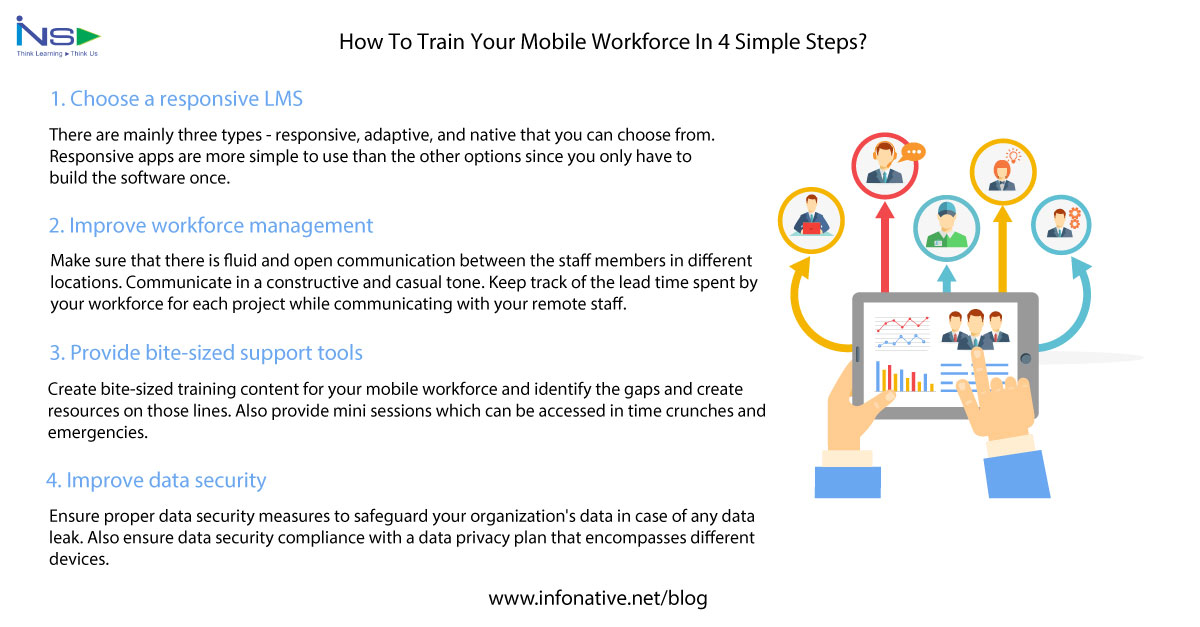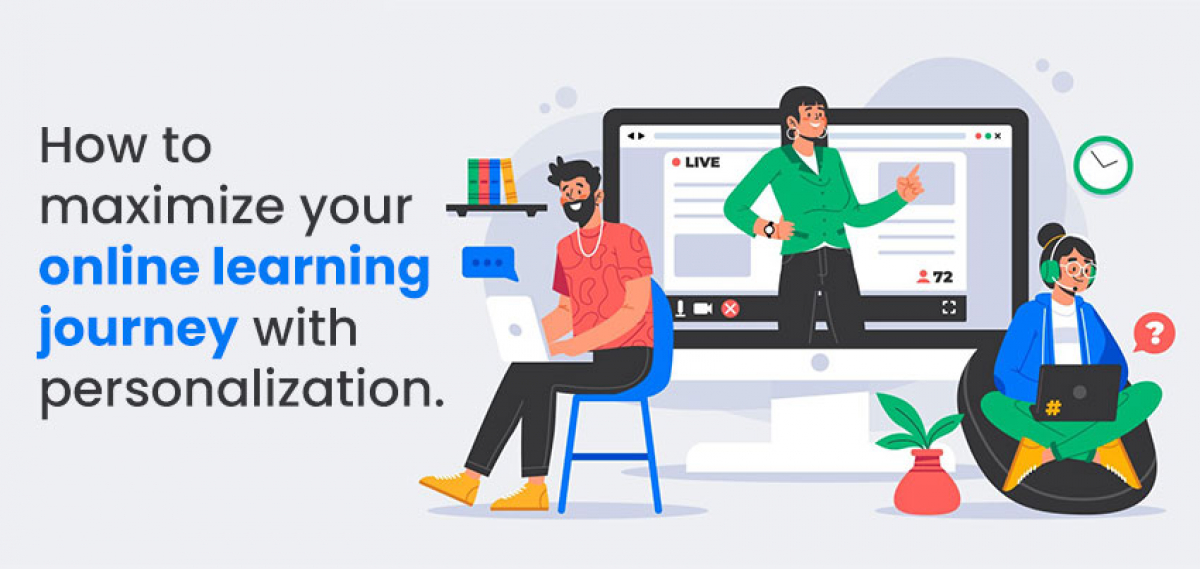In recent years after the global pandemic, there has been an increase in remote working. This has led to the rise of the mobile workforce who mostly work from home and are connected to their offices via mobiles, tablets, or laptops irrespective of their locations. While there are numerous benefits to having a mobile workforce such as reduced costs, and higher employee productivity and engagement, it doesn't come without some challenges.
So, the question is how to create the right training for your mobile workforce? How do you launch this training platform in a way that gets them invested enough to use it regularly? What type of technologies can you use to implement it?
Here are 4 simple steps on training your mobile workforce in a way that interests them, improves their knowledge retention and boosts their performance:
1. Choose a responsive LMS
2. Improve workforce management
3. Provide bite-sized support tools
4. Improve data security
1. Choose a responsive LMS
Choosing a responsive LMS is important when training your mobile workforce. There are mainly three types - responsive, adaptive, and native that you can choose from. While responsive apps automatically adjust to the device’s screen size and configuration, adaptive responses have pre-programmed screen formats where they automatically move between screen layouts on the detection of a new device.
Responsive apps are more simple to use than the other options since you only have to build the software once. On the other hand, facilitating adaptive responses takes a little more time, ROM, and RAM. Lastly, you also have the option to design a free-standing app which can be downloaded on your employees’ mobiles. Even though it is the most comprehensive and costly option, it successfully eliminates all training LMS accessibility obstacles for your mobile workforce.
2. Improve workforce management
The management of remote mobile workforce is another challenge an organization has to tackle. The challenge becomes even more evident with a large mobile workforce. So how can businesses overcome these hurdles?
The very first thing to be done is to make sure that there is fluid and open communication between the staff members in different locations. Communicate in a constructive and casual tone. For example, you could provide a dedicated phone platform for communication among the workforce by switching to VoIP. You could also use video conferencing and collaboration tools such as oom, MS Teams, and Google Meet to keep connected and conduct virtual remote meetings with your mobile workforce. All this enables your employees to remain on the same page and also helps to easily keep track of the tasks shared across team members.
At the same time, you have to ensure to set clear objectives and expectations for your mobile workforce. Allow some flexibility for your employees to manage their own items and workload. Finally, keep track of the lead time spent by your workforce for each project while communicating with your remote staff.
3. Provide bite-sized support tools
Another essential thing to note is to create bite-sized training content for your mobile workforce. Normally, online courses are designed to be short however it becomes even more important when it comes to your mobile employees. The reason behind it is that these employees have less time to learn and can focus for a shorter time on their mobile devices.
If the training content is too lengthy, it will cause a micro-burnout among your staff. You also need to identify the gaps and create resources on those lines. Therefore, only provide mini sessions which can be accessed in time crunches and emergencies. Such types of sessions can work really well for JIT scenarios and refresher courses. Lastly, you should focus on other performance problems which aren’t that crucial.
4. Improve data security
It is of vital importance that you focus on improving data security when using remote technologies for the mobile workforce. Why? Your data is as important as your other assets.
Because in situations where there is a data leak, it could severely affect your business by making your confidential data available to external parties thereby leading to a privacy breach for your clients. Plus, data breaches are an equal threat to any business be it large or small or medium-sized businesses. Hence you should work on enhancing your data security and IT remote management.
Keep in mind that it is data that enables your company’s departments to operate effectively. Plus, your business could improve its trust level with the people after implementing proper data security measures. As people would know that your organization respects the privacy of people and takes it pretty seriously.
Lastly, ensure data security compliance with a data privacy plan that encompasses different devices (mobiles, tablets, laptop s, etc) that your mobile workforce uses irrespective of the location.
Final word
We hope this article provided some insights on the ways to create the right training for your mobile workforce and get them invested enough to actively utilize it. Even though at the start, it may seem difficult to adopt new technologies and change company culture but eventually it will prove beneficial to your organization in the long run. Overall costs will reduce, workforce productivity and performance will increase and your organization will reach greater success.
Select the right employee training LMS for your remote and mobile workforce. Try MindScroll LMS - the next-generation cloud LMS to deliver online training. Schedule a demo today! Learn more on https://infonative.net/mindscroll. For any queries, feel free to reach out to us at yg@infonative.net
Check our articles for resources you and your team may need
Read next: 4 Common Microlearning Mistakes That You Should Avoid




